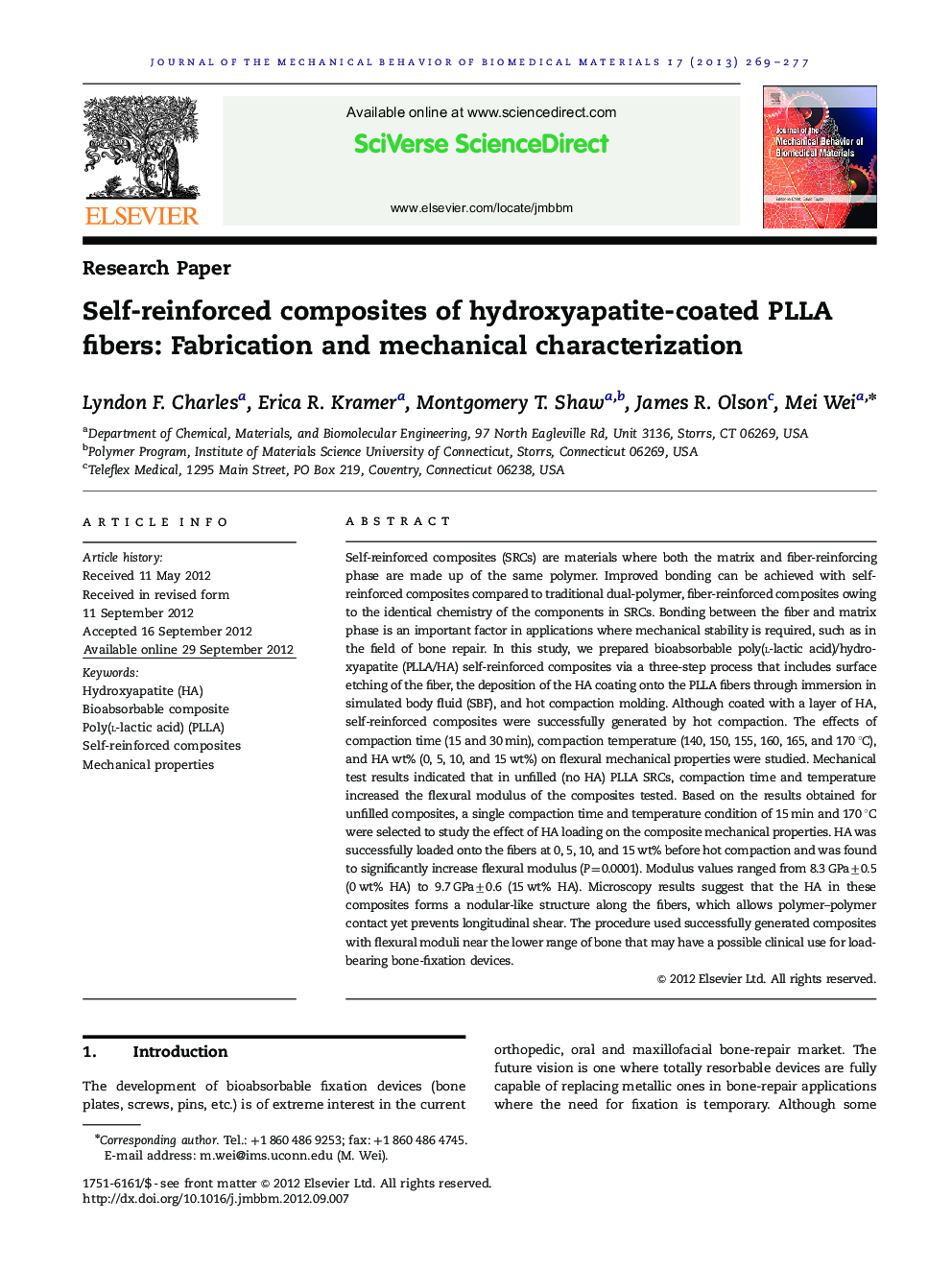| Article ID | Journal | Published Year | Pages | File Type |
|---|---|---|---|---|
| 810985 | Journal of the Mechanical Behavior of Biomedical Materials | 2013 | 9 Pages |
Self-reinforced composites (SRCs) are materials where both the matrix and fiber-reinforcing phase are made up of the same polymer. Improved bonding can be achieved with self-reinforced composites compared to traditional dual-polymer, fiber-reinforced composites owing to the identical chemistry of the components in SRCs. Bonding between the fiber and matrix phase is an important factor in applications where mechanical stability is required, such as in the field of bone repair. In this study, we prepared bioabsorbable poly(l-lactic acid)/hydroxyapatite (PLLA/HA) self-reinforced composites via a three-step process that includes surface etching of the fiber, the deposition of the HA coating onto the PLLA fibers through immersion in simulated body fluid (SBF), and hot compaction molding. Although coated with a layer of HA, self-reinforced composites were successfully generated by hot compaction. The effects of compaction time (15 and 30 min), compaction temperature (140, 150, 155, 160, 165, and 170 °C), and HA wt% (0, 5, 10, and 15 wt%) on flexural mechanical properties were studied. Mechanical test results indicated that in unfilled (no HA) PLLA SRCs, compaction time and temperature increased the flexural modulus of the composites tested. Based on the results obtained for unfilled composites, a single compaction time and temperature condition of 15 min and 170 °C were selected to study the effect of HA loading on the composite mechanical properties. HA was successfully loaded onto the fibers at 0, 5, 10, and 15 wt% before hot compaction and was found to significantly increase flexural modulus (P=0.0001). Modulus values ranged from 8.3 GPa±0.5 (0 wt% HA) to 9.7 GPa±0.6 (15 wt% HA). Microscopy results suggest that the HA in these composites forms a nodular-like structure along the fibers, which allows polymer–polymer contact yet prevents longitudinal shear. The procedure used successfully generated composites with flexural moduli near the lower range of bone that may have a possible clinical use for load-bearing bone-fixation devices.
Graphical abstractFigure optionsDownload full-size imageDownload high-quality image (541 K)Download as PowerPoint slideHighlights► Hydroxyapatite coated PLLA self-reinforced composites were successfully fabricated. ► HA content controlled by repeated immersion cycles of PLLA in modified SBF solution. ► Composites were able to be hot pressed with up to 15 wt% HA. ► Flexural modulus was affected by molding temperature and time. ► Flexural modulus within the lower range of cortical bone was attained.
